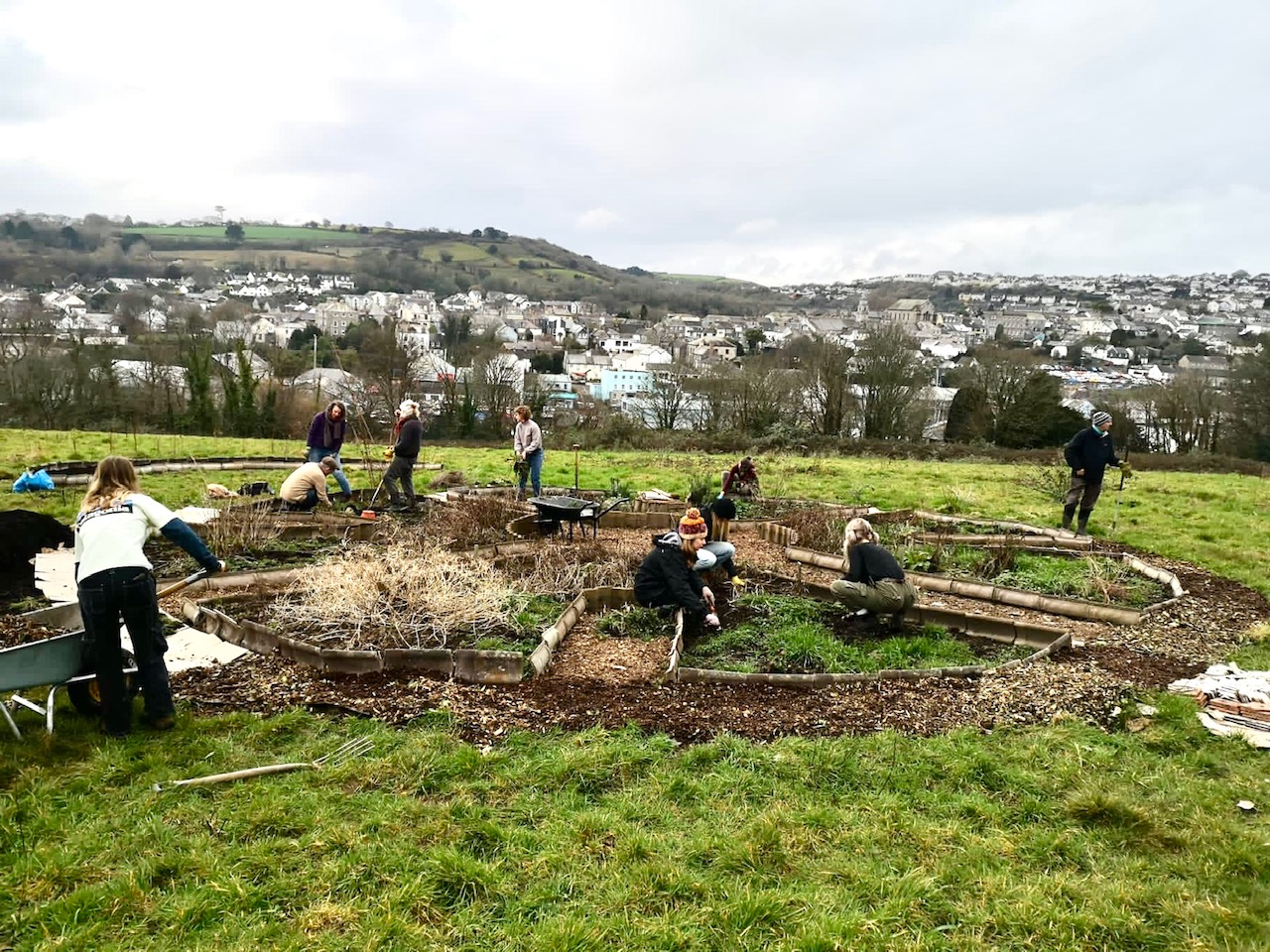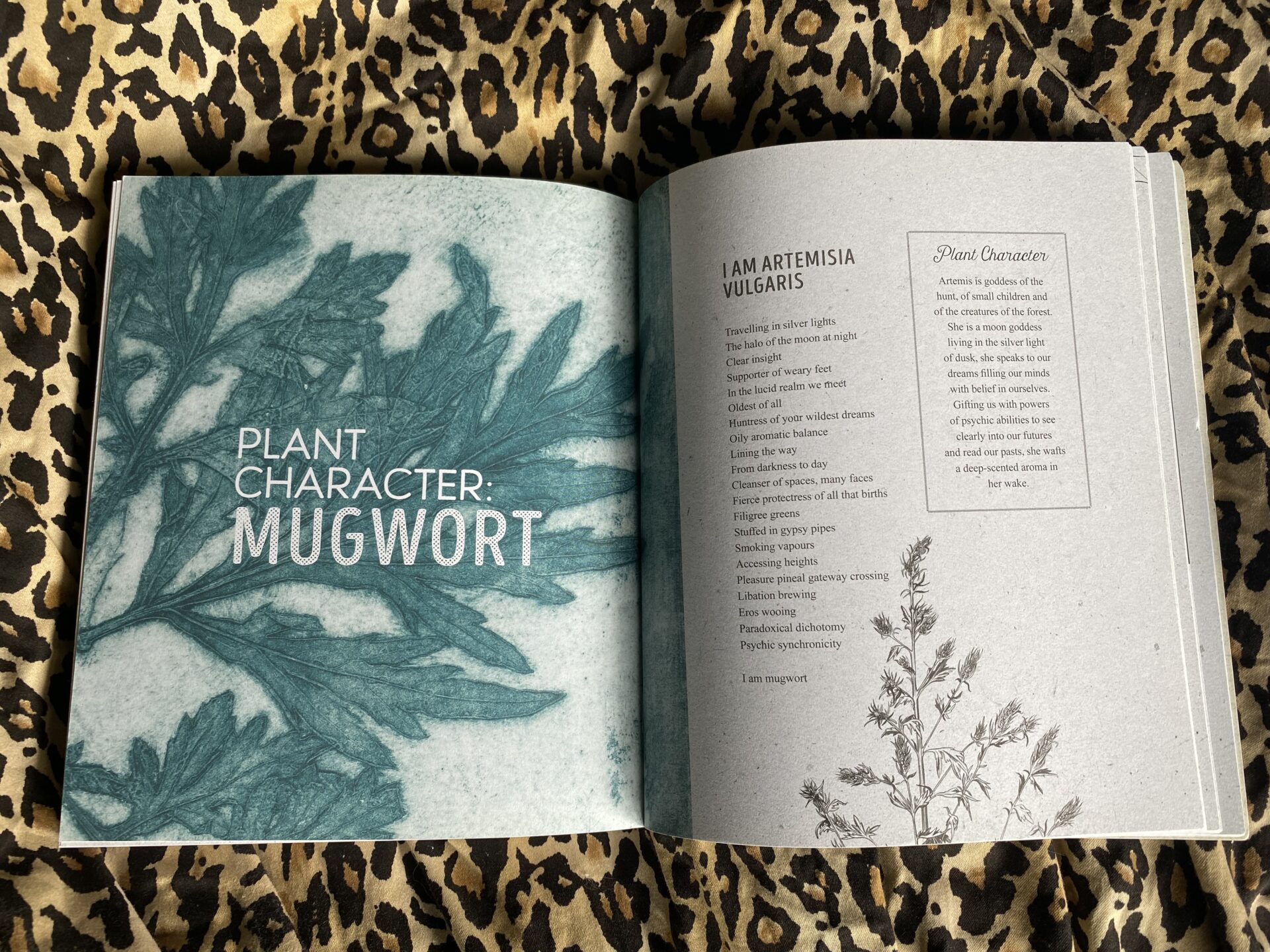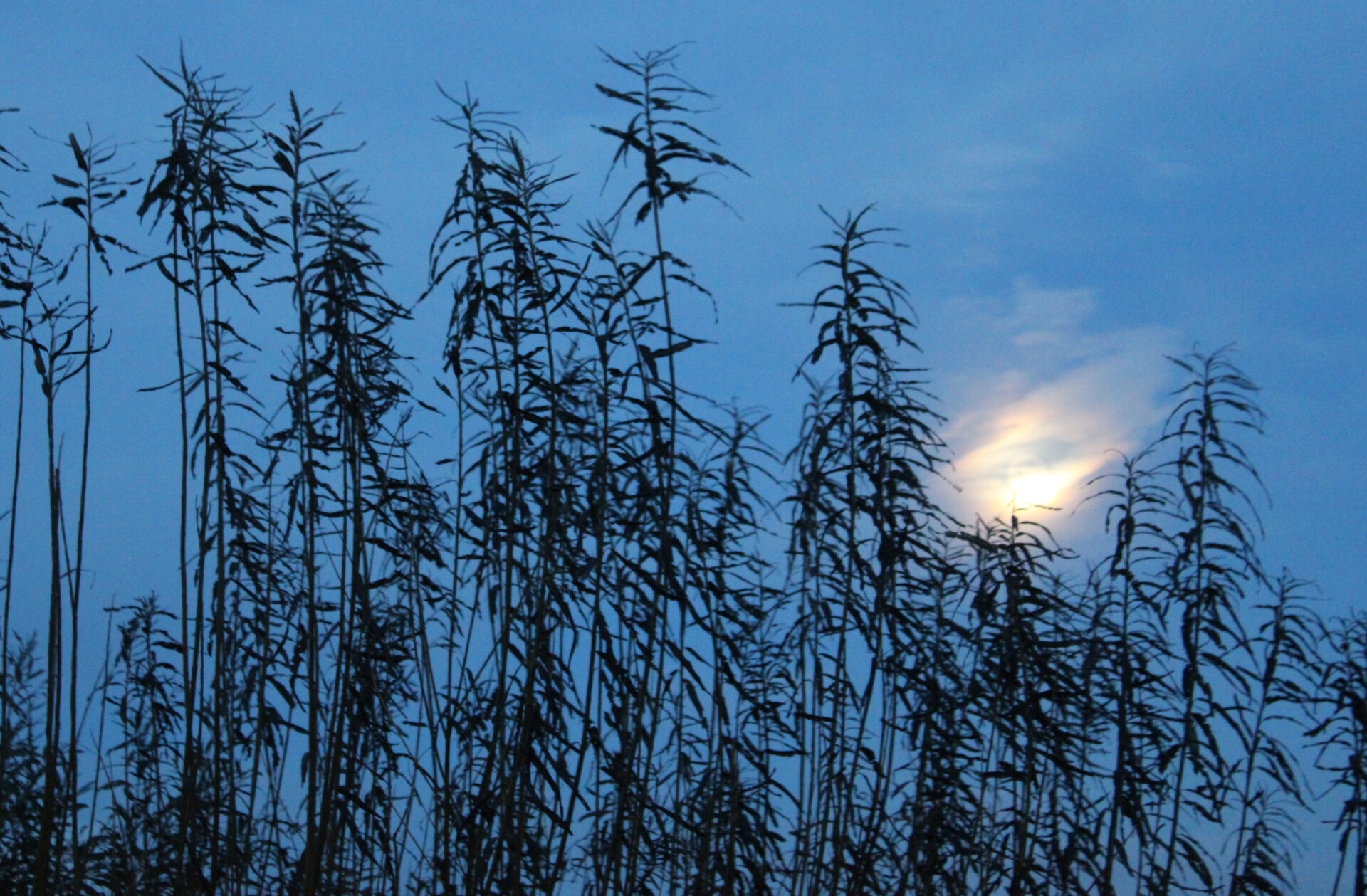Making of a Community Herb Garden at Atlantis Spiritual Centre, London
By Chris Gooch
In March, as part of a project for the Sensory Solutions Practitioner Training I am doing, I started a community herb garden outside the spiritual centre, Atlantis, in Crews Hill, Enfield. The idea was this:
- Everyone who uses the centre and who rent units in the vicinity, could benefit from the wonderful healing and beauty of the plants
- All would be free to pick and use the herbs
- Plants would be labelled and a list of actions and uses would be put up inside, so people could get to know the plants and how to use them
- Fresh tea using some of the herbs could be made for the Coffee and Compassion Group I run on a Wednesday morning
First, I checked with Lynn who runs Atlantis that she would be happy for me to do this, which she was. I cleared the old, broken chairs off the porch where the garden was going to be made and Shelley, the lady who runs Web of Dreams next door, took these to the local recycling centre. I swept the decking and cleared some of the rubbish, cigarette ends etc and scraped some of the leaf debris off the area in front of the site, which looked unsightly and would not add to the beauty of our soon-to-be garden.
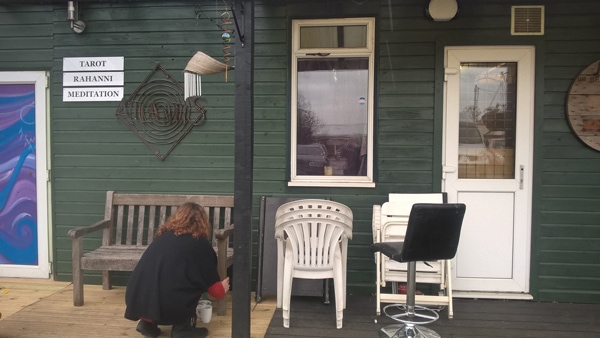
I then announced the intention on the Atlantis Facebook site and asked for containers, the quirkier the better, to be donated. I was delighted with the response and within the first week I had my first pair of yellow, blue and green striped wellington boots. Perfect! One of these now has horseradish growing in it. More wellington boots and pots appeared, also a basket which Debbie from the Coffee & Compassion group had painted.
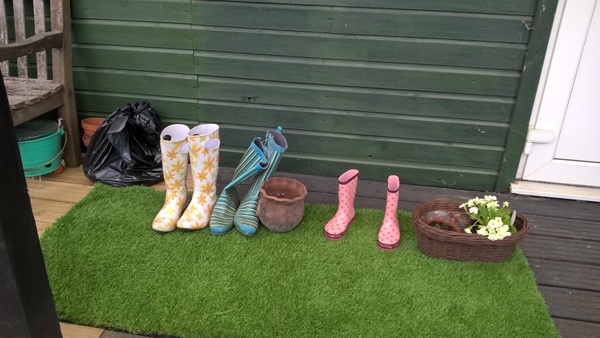
Next, I thought about planning the base of the decking and thought some protection might be appreciated by the site owners. With this in mind, I visited the fake grass company who have a unit on site. I asked how much the grass was per metre and explained what I wanted it for. The man was lovely and said to wait a minute. He unlocked a cupboard on site and pulled out a piece of fake grass which was about 1.75 metres long and about 0.75 metres wide. He said he was happy to donate this to us. I took this over to our unit and positioned it between the bench and the door marking the end of our unit. It fitted perfectly and I placed the wellingtons and pots on top.
The first plants to be donated were Elecampane, Ladies Mantle, Primroses, Mugwort, Comfrey and Yarrow. Later, Horseradish, Chervil, St. John’s Wort, Lemon Balm, Mint, Plantain, Feverfew, Rosemary and Lavender arrived.
For the first couple of weeks the plants just stood on the fake grass in their pots, until I sorted out what would be the best sort of containers to put them in. Around this time, the people in the vintage shop next door donated loads of old china, some of which I broke up to use as future drainage and some I am keeping in case we can use them for plants. They also donated a wicker picnic hamper with some plastic cutlery in.
One of the ladies in the Coffee and Compassion group runs a Beaver Camp and was happy to take the plastic plates and cutlery, so nothing was wasted. I pulled the plastic out of the lid and lined the bottom of the hamper with a thick red plastic lining made out of a heavy duty bin bag. I stapled this in place and put some of the broken crockery in the bottom. It looked rather good, if I say so myself. The pet shop on site had some coloured tin barrels on sale at £2.99. This was my first purchase for the garden. I bought a green one and carried this over. At home, I had an old drawer that I no longer needed, so I took this up to Atlantis and gave it the same treatment as the picnic hamper. Another container ready to go.
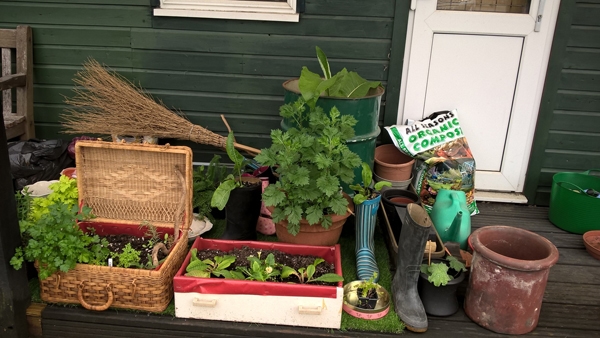
By now, I was needing to plant some of the donated plants, especially as the elecampane leaves were growing fast, so I bought a large bag of compost for £3.99 and a couple of £1 packs of water retaining crystals to mix with the compost. I should add that the decking has some corrugated plastic above so the plants would need to be watered regularly. I had an old plastic watering can at home that was spare so this also went to the site and I leave a full can by the plants each time I visit. Unfortunately it has to be filled from the kitchen tap – sadly there is no working outside water tap on site. I have asked people to please water anything that looks in need as I always leave the can full.
Shelley donated another bag of compost and after using some donated tiles (which I had great fun smashing up), to line the bottom of the barrel, I finally planted the elecampane which grew exponentially in the next few weeks, the primroses, mugwort and two pieces of horseradish which looked resplendent in the wellington boots.
My spend to date is two bags of compost at £3.99, 2 sachets of water crystals at £1 each, 1 barrel at £2.99, 1 flat leaved parsley plant at £1.10 and 3 large plant saucers at £3.49 each for the base of the wonderful chimney pots donated by Karen Beebee, making a total of £21.55. Everything else has been donated.
Donations are still rolling in. We have some wall brackets for hanging baskets, which Angie Runagall has donated, a wooden chalet with little drawers which Ofir has put on the wall. This will be perfect for putting seeds in and looks very pretty. Other donations include pots, six wooden pallets from Shedload of Crafts (another of the units on site) which I will be using to act as staging to add height to some of the plants at the back.
The Garden is very much a work in progress, but with the generosity of all the units on site and the lovely people at Atlantis I can foresee this garden becoming not only beautiful but a great practical and educational resource for all who visit the site.
My next step may be to speak to the vintage shop next door to see if we will be allowed to overflow our space into theirs as more goodies arrive. The door in this picture belongs to them and there is about a metre and a half between this one (which is not used) and the next one which is.
I am happy to buy the odd bag of compost as needed, but if it becomes necessary to buy anything else, I know that the users of Atlantis will pull together by way of raffles etc. to fund it. All in all, it has been a joy to start this herb garden up and I’m looking forward to planting up mint and the lemon balm in the chimney pots which I will position by the posts either side of the bench. In this way, fresh mint and lemon balm tea can be enjoyed all summer long.
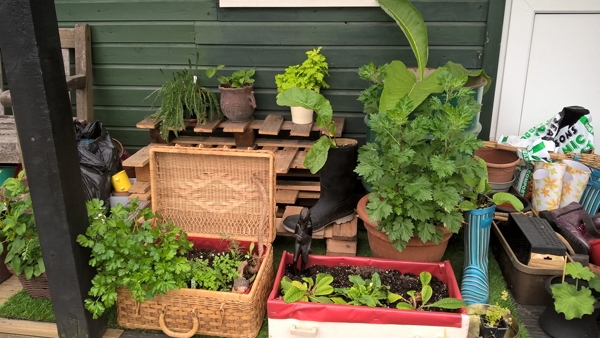
Chervil – Leaves helpful for indigestion and high blood pressure. Can use as a tea.
Elecampane – Root is used for chronic catarrh, old coughs, TB and to strengthen digestion.
Feverfew – Leaves can be eaten to treat really bad headaches and migraines.
Horseradish – Root is hot and can be grated and used as a condiment or mixed with cider vinegar and taken in hot water for colds, flu and early stages of fever. It acts as a circulatory stimulant, is warming and helpful for the digestion. The young leaves can be eaten in salads or sandwiches.
Lady’s Mantle – Leaves can be used as a tea for female disorders relating to the menopause, menstruation and after giving birth.
Lavender – Flowers can be made into a tea and used where stress plays a part in insomnia, headaches, mental exhaustion and to generally calm. They can also be added to sugar, biscuits and vinegars. Lavender is anti-depressant and antiseptic. Can be used in baths.
Lemon Balm – Leaves can be used in salads, vinegars and to make tea. It is a nervine tonic and helpful for depression, anxiety, digestive upsets and tension headaches. Makes a wonderfully fresh and uplifting tea mixed with fresh mint leaves. Can be used in baths.
Marigold – Petals can be used in salads, rice, cakes and teas. It is soothing to the digestive system, is anti-fungal, clears infections and helps heal damaged or irritated tissues.
Mint (Eau de Nil) – All mints are cooling. Leaves can be added to salads, water jugs, in teas and mix wonderfully with Lemon Balm. It acts mainly on the digestive system and is antiseptic and mildly pain relieving so useful for indigestion, headaches, IBS, nausea and colds.
Mugwort – Leaves (dried) can be used in place of tobacco and long stems can be folded over and made into smudge sticks (incense). It is said to open the third eye and encourage lucid dreaming. It has an affinity for the womb, stomach and nerves. Can also be drunk as a tea.
Parsley – Leaves can be eaten raw or used as tea. It is rich in minerals, calcium, potassium and silica. It is a uterine and gastric tonic. Helpful for PMT and hot flushes; gets rid of the smell of onions on the breath; windy colic and cramps.
Plantain – Seed husks are used as a bulk laxative and to soothe irritate membranes and reduce bleeding. Leaves can be used as a tea for urinary tract infections, sinus and phlegmy conditions.
Primrose – Flowers and young leaves can be added to salads. Flowers used in ice cubes to add to drinks. Dried flowers and leaves can be used as tea for respiratory tract infections, anxiety and rheumatic disorders.
Rosemary – Stems can be used as tea or put in oil or vinegar. Traditionally served with lamb as it improves digestion and is anti-bacterial. Useful during stressful times such as exams as it relaxes spasms is stimulating and relieves pain. Can be used in baths.
St. John’s Wort – Known for it’s anti-depressant qualities. The flowers in oil turn the oil bright red. Helpful for nerve pain and injuries where nerves are abundant. Good for sores and stubborn ulcers.
Yarrow – Stems, leaves and flowers can be used to make a tea. This can be used to stop internal and external bleeding and to clean wounds. It is a digestive tonic and is both anti-inflammatory and calming (like Chamomile).
For anyone who is pregnant, they should check out first if any plant is safe to use.
“It looks lovely — feel free to extend it!” neighbour at Atlantis Spiritual Centre
So far I’ve used the mint and lemon balm to make tea for the Coffee and Compassion group (tea not coffee!). I took a large bunch of parsley home to add to my dinner. I’m waiting for the mugwort to flower so I can dry it for smoking, and I gave some mint to a client so they could make tea.
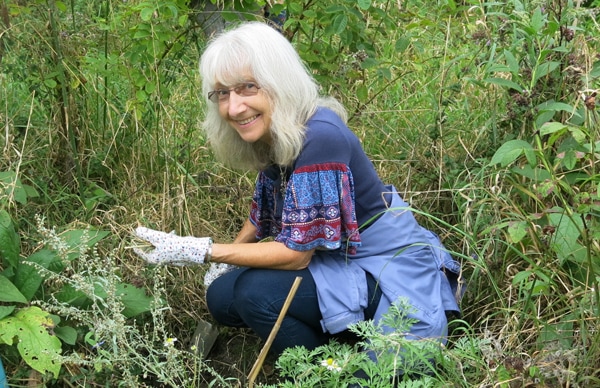
Chris Gooch is embarking on the second year of her Sensory Herb Practitioner Training and will graduate as a qualified Sensory Herbalist in May 2018. Each student must create a community medicine garden as part of their coursework on the Practitioner Training.


